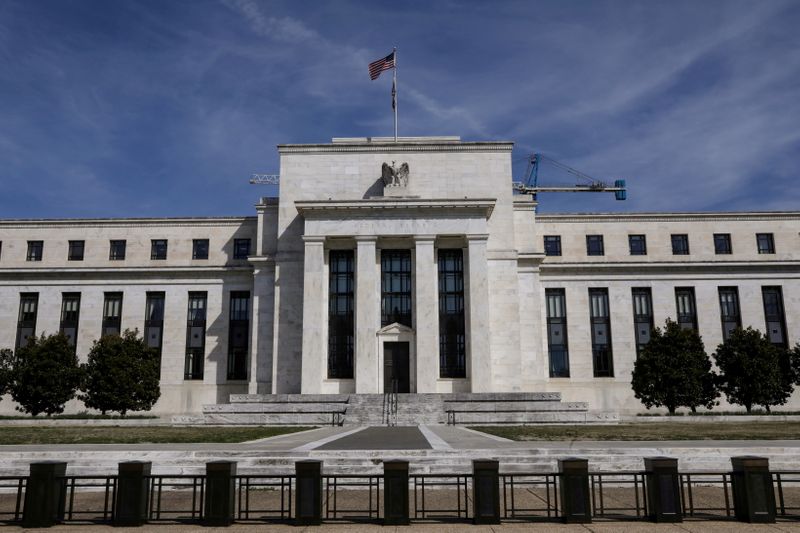By Karen Pierog
(Reuters) - A hawkish shift from the U.S. Federal Reserve last week has focused attention on the shape of the yield curve. Here’s a short primer explaining what the yield curve is and how its shape may reflect expectations of the economy’s trajectory.
WHAT IS THE U.S. TREASURY YIELD CURVE?
It is a plot of the yields on all Treasury securities ranging from one-month bills to 30-year bonds.
Normally, it has an arcing, upward slope because investors expect more compensation for taking on the added risk of owning government debt as maturities grow longer. That means a 30-year bond would yield much more than a one-month bill or five-year note. Bond yields move inversely to prices.
WHAT IS A STEEP OR FLAT YIELD CURVE?
If the gap between yields on shorter-maturity and longer-term debt, as measured in basis points, widens substantially, the yield curve is called steep. That could signal expectations of higher economic growth and inflation.
A contracting gap indicates the curve is flattening with smaller yield differentials between short- and long-term debt. This is a possible indicator of factors like economic uncertainty, easing inflation concerns, and anticipation of tighter monetary policy.
WHAT HAPPENED TO THE YIELD CURVE AFTER LAST WEEK'S FEDERAL RESERVE MEETING?
A majority of Fed policymakers shifted their projections for the first interest rate hike into 2023 amid signs of accelerating inflation, surprising markets and sparking a sharp rise in yields on two- and five-year notes, which are the most sensitive to interest rate changes.
Long-term yields subsequently fell, flattening the yield curve between five-year notes and 30-year bonds, with the gap shrinking to its narrowest since August 2020 on Monday.

Research by Morgan Stanley (NYSE:MS) found that this so-called “bear flattening”, which it defines as denoting a "strengthening recovery" that "leads the market to price in more policy tightening" occurs in the middle of an economic cycle and has tended to be comparatively bullish for stocks and the dollar.
Other yield curve phases are "bear steepening," which denotes early-cycle confidence about longer-term economic growth even as short-term rates remain low; "bull flattening," which points to late-cycle economic strength leading to tighter economic policy and increased fears of an approaching downturn; and "bull steepening," when a downturn occurs and economic confidence ebbs despite aggressive central bank policy easing, according to Morgan Stanley.